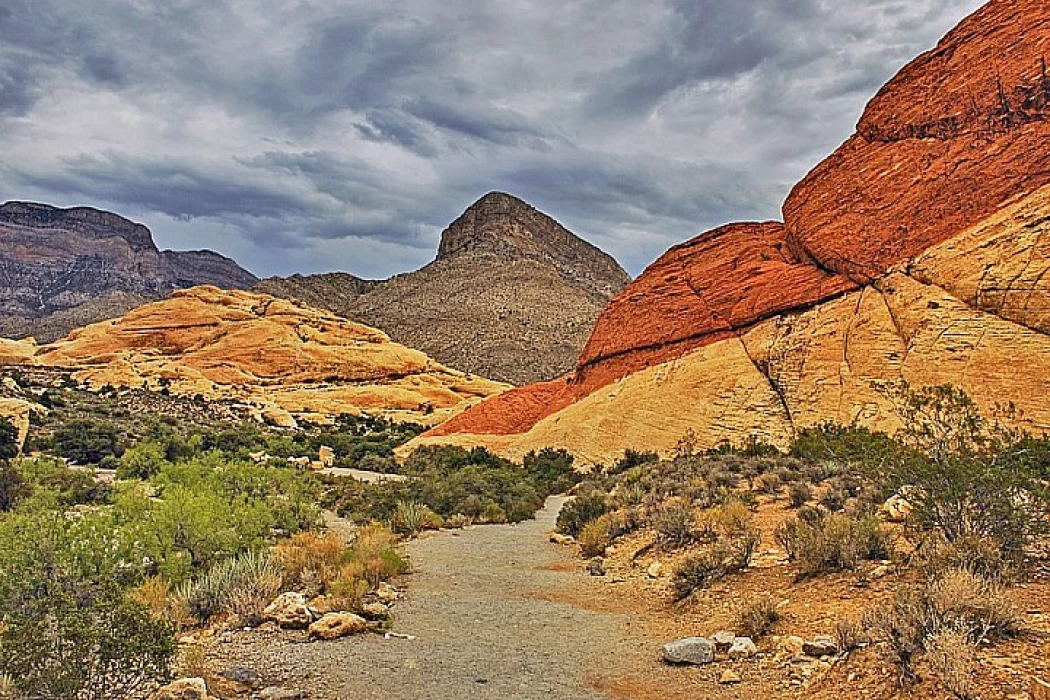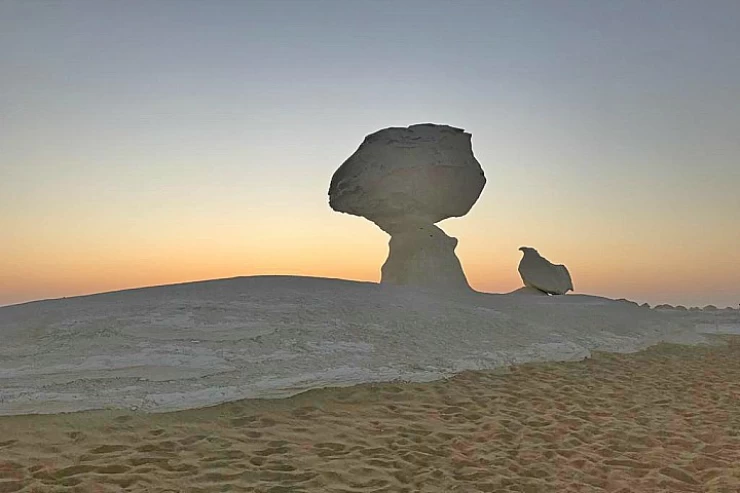
History of The Crystal Mountain in Bahariya Oasis
Crystal Mountain is a unique hill formed from more than 12 types of crystal-like stones that merge, forming an amazing natural appearance located in the White Desert of the Farafra Oasis in Egypt. The mountain is characterized as one of the most wonderful natural areas in the White Desert, and it is a mountain consisting of crystal rocks, which is unique, where shiny crystal pieces are considered precious rocks that have no analogues in the world, and it has become one of the most important tourist attractions, especially because it contains the most beautiful charming views, with picturesque nature.
The reason for naming the mountain
This Crystal Mountain located in the Farafra region in the western desert of Egypt is a cave area formed as a result of drowning and its rocks turned into crystal-like metamorphosed limestone rocks, where shiny crystal pieces, and this name is because it contains a large amount of Crystal covering large areas of the mountain in which there is a huge mountain mass .these shiny crystals are the original diamond material, which made people call it by this name, which is millions of years old.
Location of the mountain
Crystal Mountain HillsThe mountain is located 170 kilometers south of Bahariya oases, about 360 kilometers southwest of Marsa Matrouh, and about 627 kilometers away from Cairo in the New Valley governorate in Egypt. it has become famous all over the world and has been put under the tourist and scientific spotlight because of its location, history, monuments, rare unique landmarks.
Description of the mountain
The Crystal Mountain consists of unique Hills made up of more than 12 types of stones that resemble crystal from the first sighting of these stones, and it is seen in the form of a small arc of rocks that shows its luster when the sun's rays reflect on it, making it resemble the crown of a King decorated with thousands of colored jewels in the middle of that desert, which has become comparable to the imagination and the lights that are issued on it at sunrise.
History and discovery
Alfrafra In several ancient Egyptian documents, especially during the reign of the tenth pharaonic dynasty in the Twenty-First Century BC, it was called (Ta-ay) the land of the cow, and the ancient Egyptians gave it this nickname because of the abundance of pastures and cows in it, and in Roman times, Farafra, Dakhla oases and Bahriya oases were the grain land of the Roman Empire and were called the land of Roman, in an area called Ain Bes, and in the early Christian era, Farafra was a sanctuary During many periods of ancient history, after the Islamic conquest of Egypt, the date and olive trade flourished between Farafra and the Nile Valley, camel caravans carried the products of the OASIS to the city of derout on the Nile, which belongs to the governorate of Asyut, and returned with fabrics, tea and everything produced by the land of the Nile Valley to Farafra.
Recently
German scientist and explorer Gerhard Rolfs (in German: Gerhard Rohlfs, who came to Egypt in 1874 to find out whether there really was a river without water in the region or not, and Rolfs tried to penetrate the Great Sand Sea, which is located to the west of Farafra and 300 km wide to the Kufra oasis in Libya, he could not, and then headed north with a convoy of 100 camels and 90 men, including 12 German scientists specializing in various branches of science, including geology, flora, fauna, archeology, astronomy and space to the cave of the neighbor on that trip and published it in his famous book entitled ("three months in the Western Desert"). The oasis of Farafra has recently gained international tourist fame to compete with the city of Luxor, known all over the world for its pharaonic monuments in its tourist Fame, where it is visited by many groups of tourists, and Farafra has now become a global destination for many safaris known to lovers of these trips, as well as nature and science lovers, where many students of geology, researchers and others are going to the White Desert Reserve.
Nature reserve
The state imposed protection on this mountain as a nature reserve in about 2007, after most tourists and locals collected scattered crystal pieces, which caused it to be devoid of most of the pieces, leaving only the solid structure of the mountain, which is difficult to break, but it turned out not just colored stones but one of the most expensive types of stones in the world, but this action came too late, as a large part of this treasure was destroyed, and looted to lose much of its beauty and splendor.
Geology of the mountain
stalagmites and stalactites like ascending and descending stairs, and over time, as a result of erosion factors, the cave lost its roof, and there are ancient indications that the area was formed after a great meteorite hit the Earth, and the rocks melted, until they turned into pieces of precious crystal after most tourists and locals collected pieces The scattered crystal caused it to be devoid of most of the pieces and left only the solid mountain structure that is difficult to break but turns out not just colored stones.















